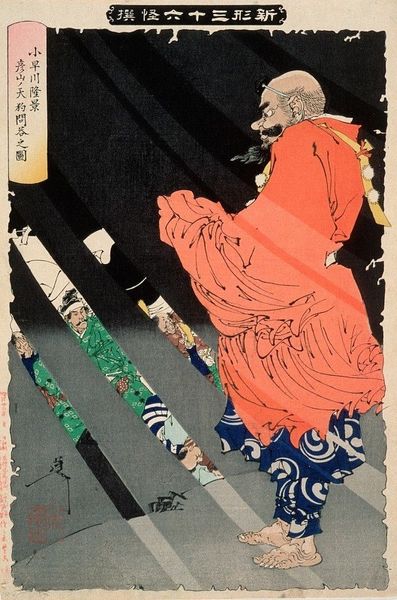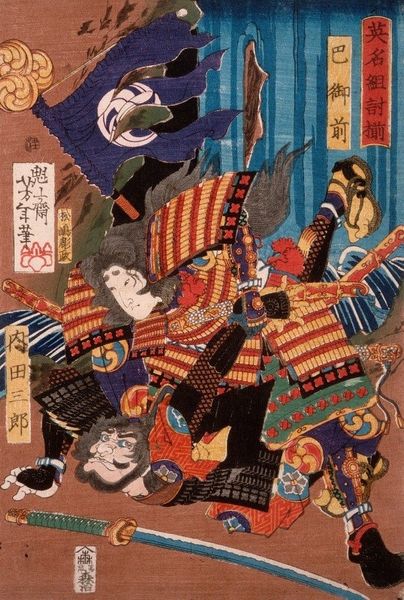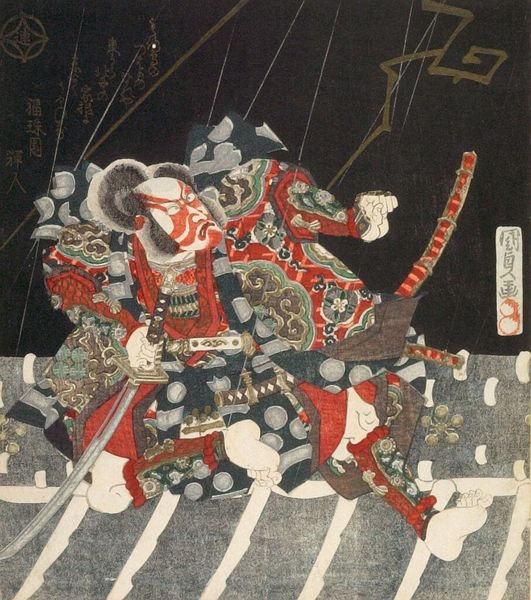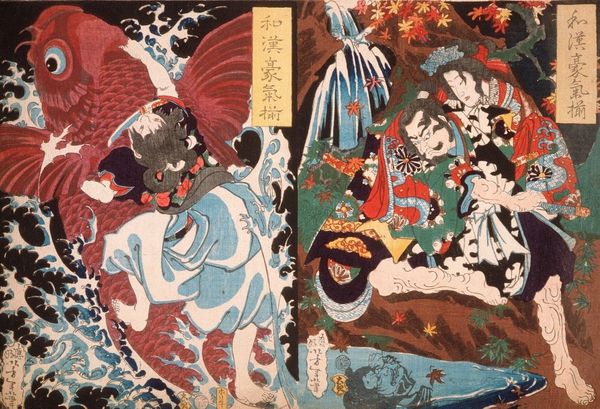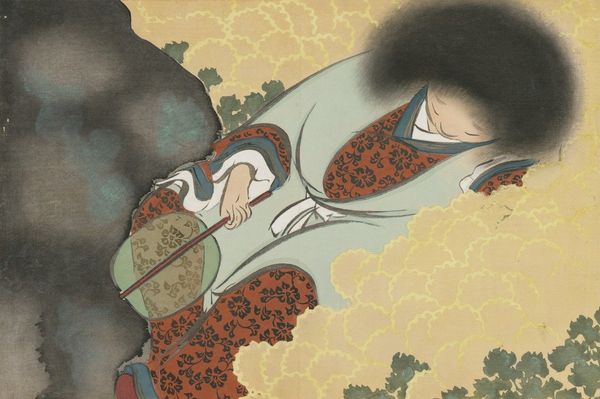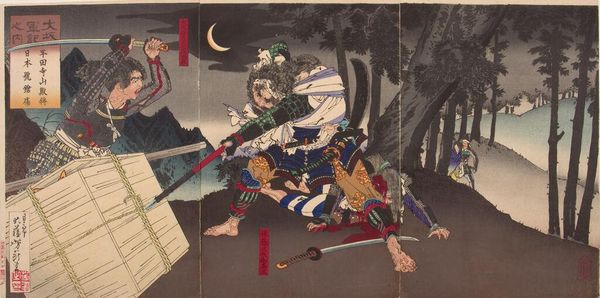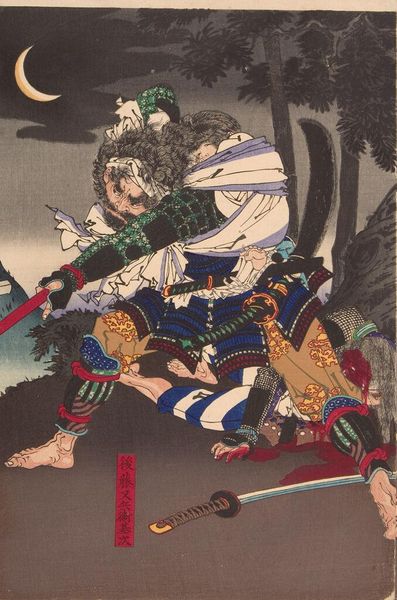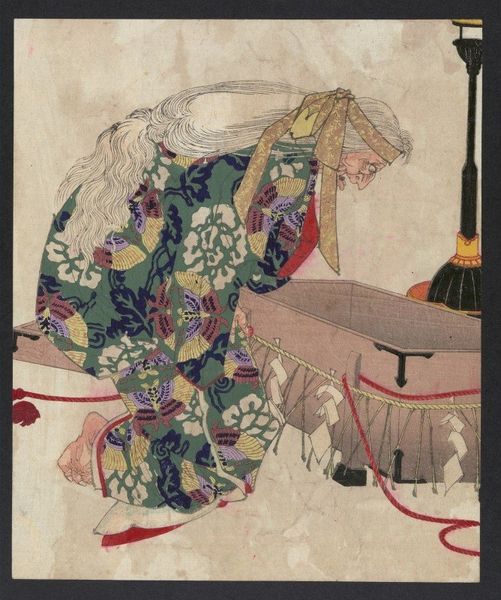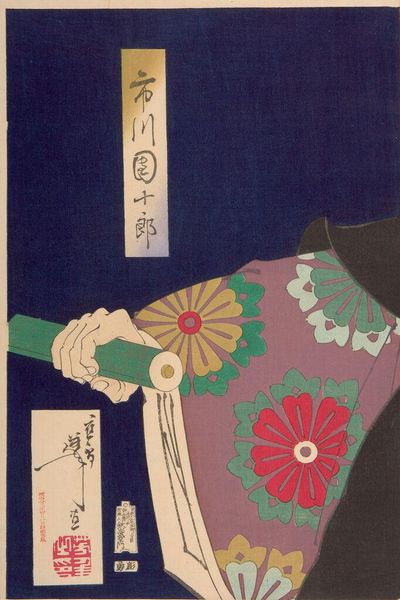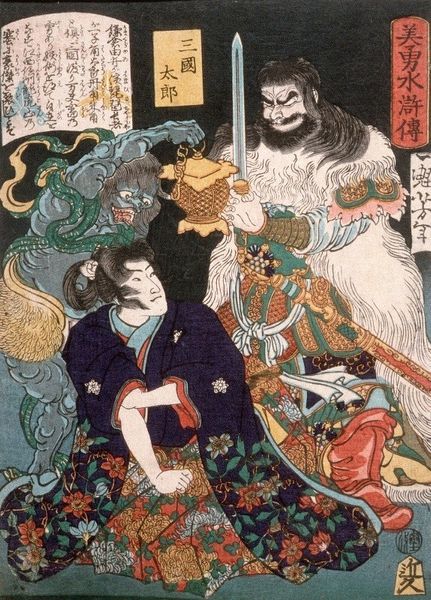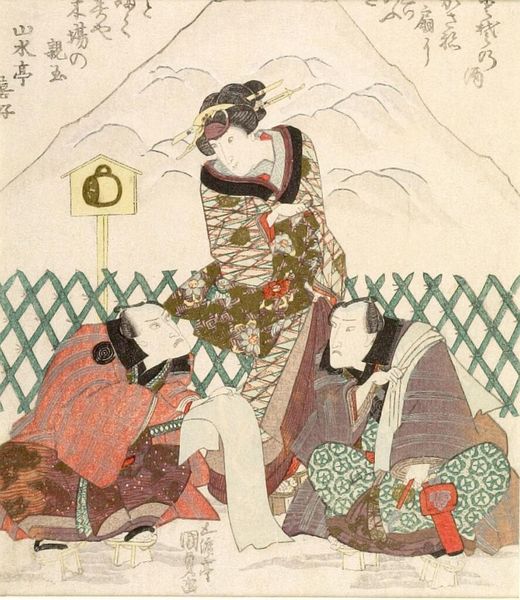
Copyright: Public Domain: Artvee
Curator: Let’s examine this striking woodblock print crafted around 1890 by Tsukioka Yoshitoshi. It’s titled “I No Hayata Kills the Nue at the Imperial Palace.” Editor: What strikes me immediately is the darkness—both literally in its color palette, and metaphorically in the dramatic clash depicted. You've got a human figure locked in combat with something truly monstrous. Curator: Indeed. Yoshitoshi masterfully depicts the epic struggle between I No Hayata, a brave warrior, and the Nue, a legendary creature plaguing the Emperor. Considering that Yoshitoshi's work coincides with the decline of traditional ukiyo-e, there’s something almost defiant about his choice of such fantastical subject matter, wouldn't you agree? It is as if he resists against this industrialization that will occur. Editor: Absolutely. In a broader sense, it’s fascinating how this artwork participates in narratives of power and social anxieties. This 'nue,' composed of such mismatched parts, might symbolize political and social disorder—fears projected onto the 'other'. And think of the resources involved: the woodblock carving, the inking process, the paper production, each part carrying its own weight within that cultural and social fabric. Curator: Good point. Consider the laborious carving of these incredibly detailed lines on woodblocks to make the print. Every line signifies conscious craft work but what’s especially intriguing to me is the medium used for creating this scene. Woodblock prints were consumed widely and distributed, playing a pivotal role in shaping shared historical narratives. Editor: Right. How were these images circulated? To what audience? Such circulation reinforces ideology but can simultaneously challenge or critique aspects of societal power structures. The warrior's struggle, replicated and distributed, could ignite a renewed spirit of patriotism. Curator: Exactly. Yoshitoshi utilizes established ukiyo-e conventions but with a flair for heightened drama, using striking lines and vivid colors. His masterful play on traditional techniques to engage with more contemporary themes of social anxiety speaks to the endurance and adaptability of art itself. Editor: For me, it calls into question how cultural production processes contribute to the establishment and reinforcement of societal structures but I agree, the artwork’s value resides in its artistic presentation. Curator: This work really pushes one to consider how artistic interpretation might be closely aligned to power. Editor: Or conversely, serve as tools for its examination. I think its complex layers continue to resonate now, long after its original creation.
Comments
No comments
Be the first to comment and join the conversation on the ultimate creative platform.
